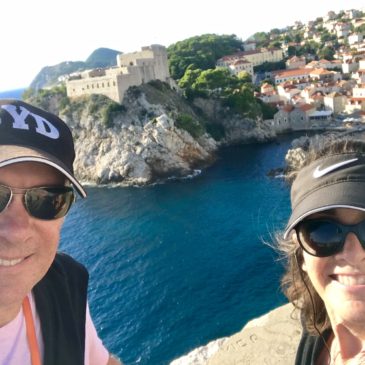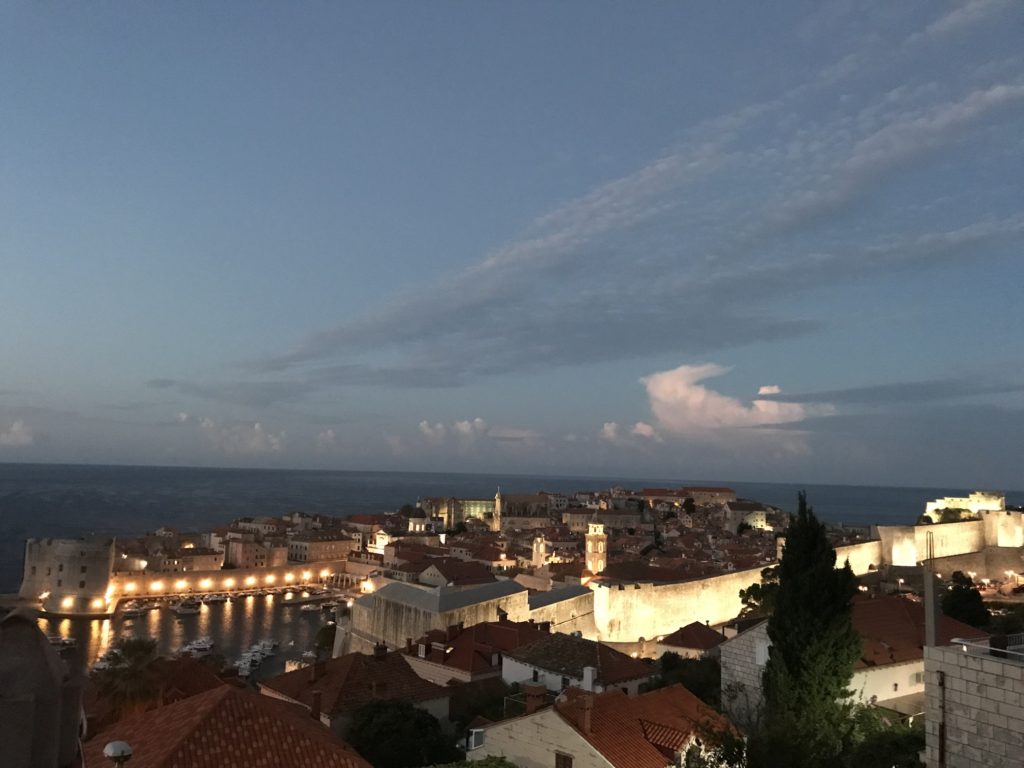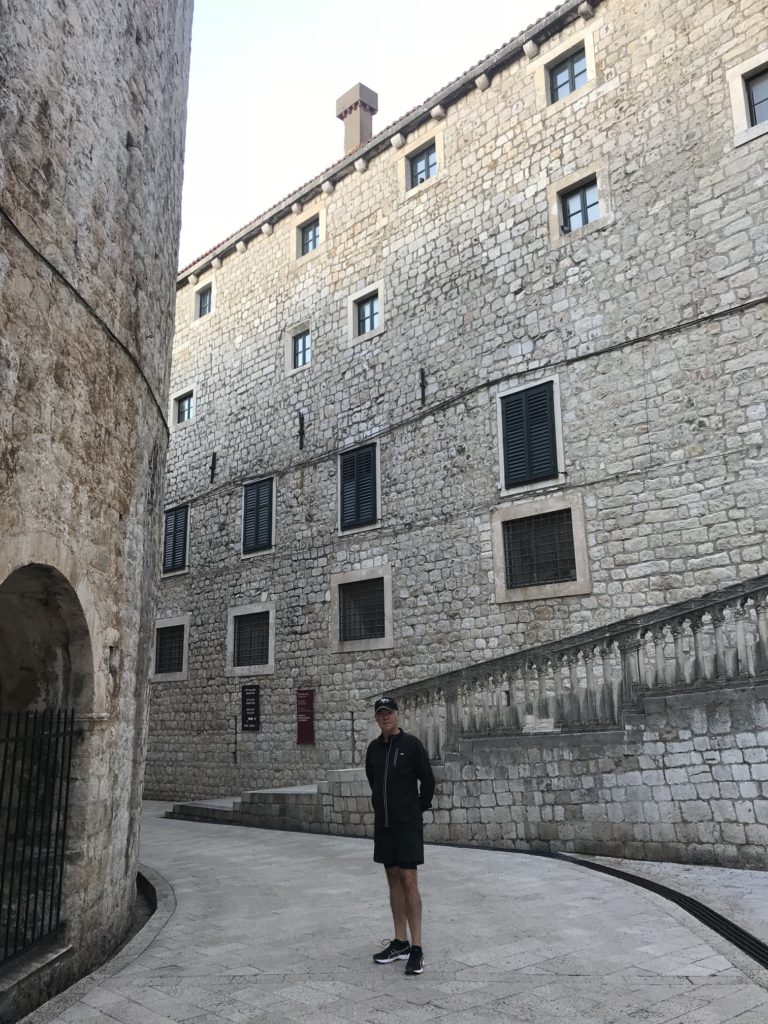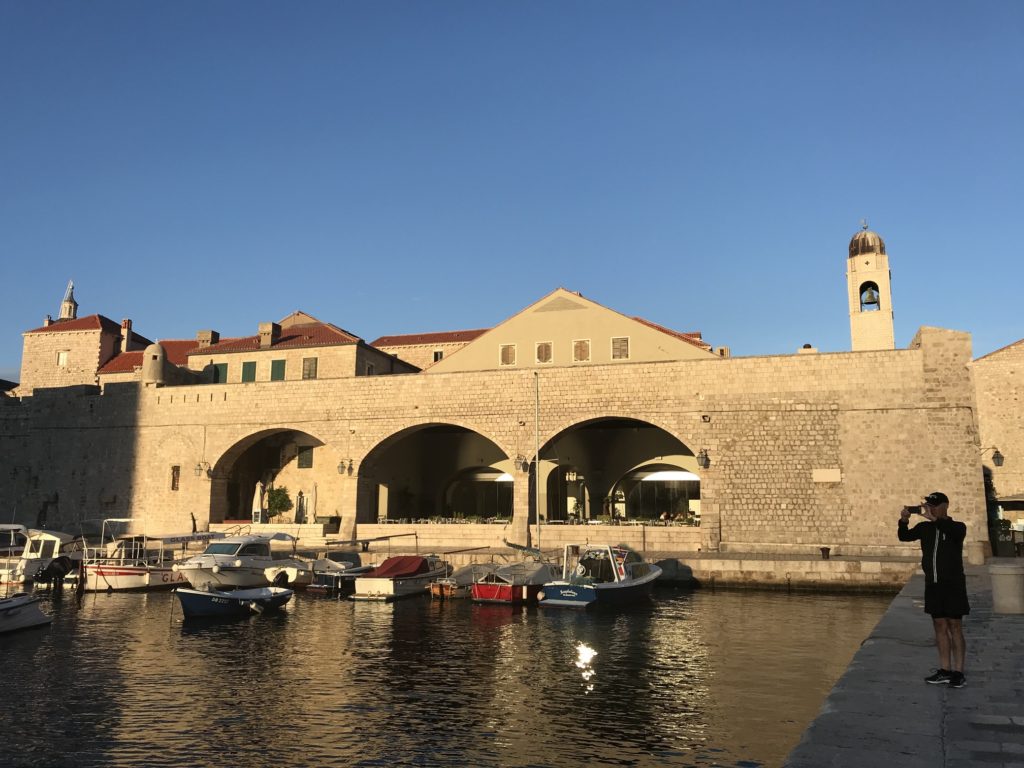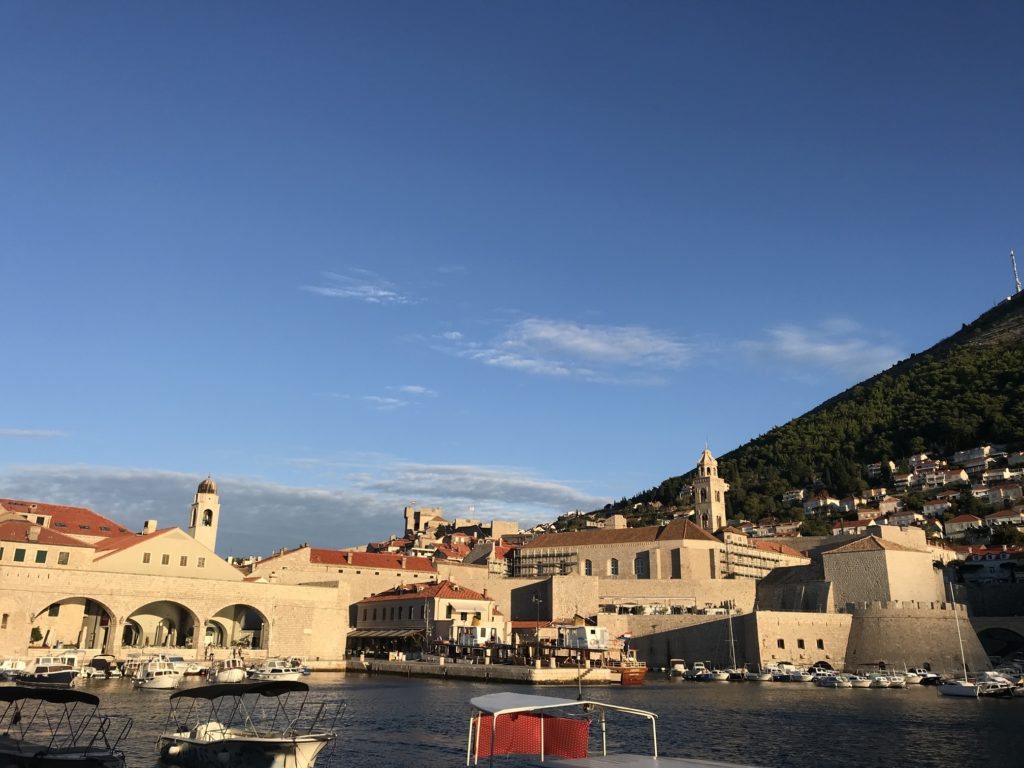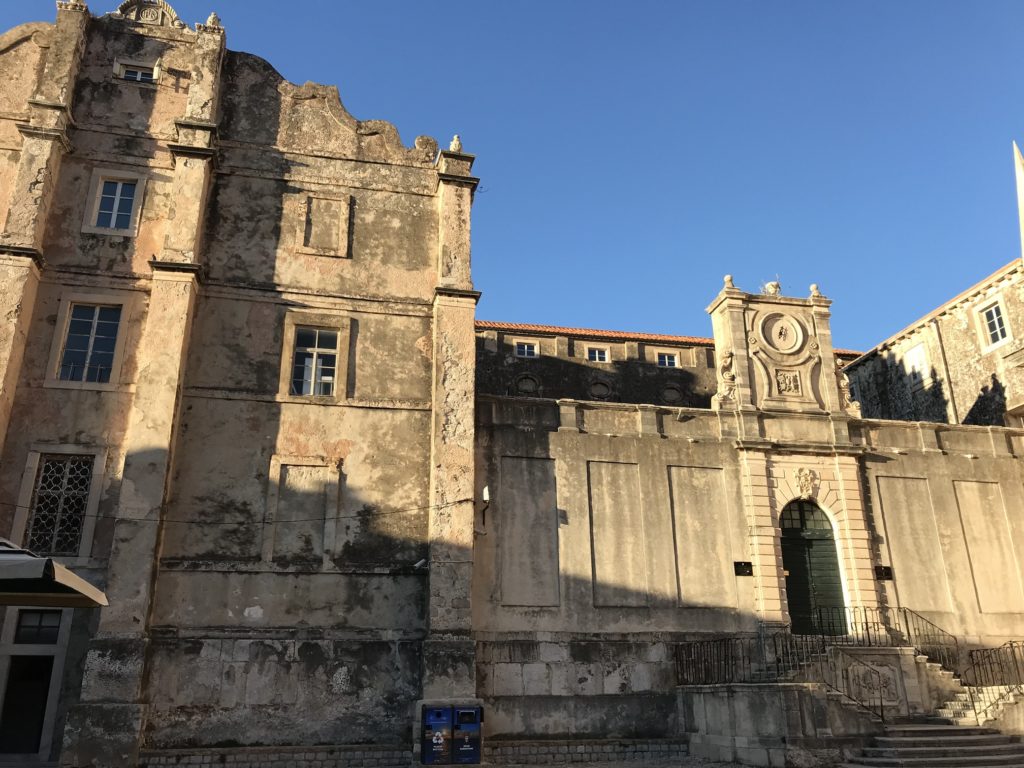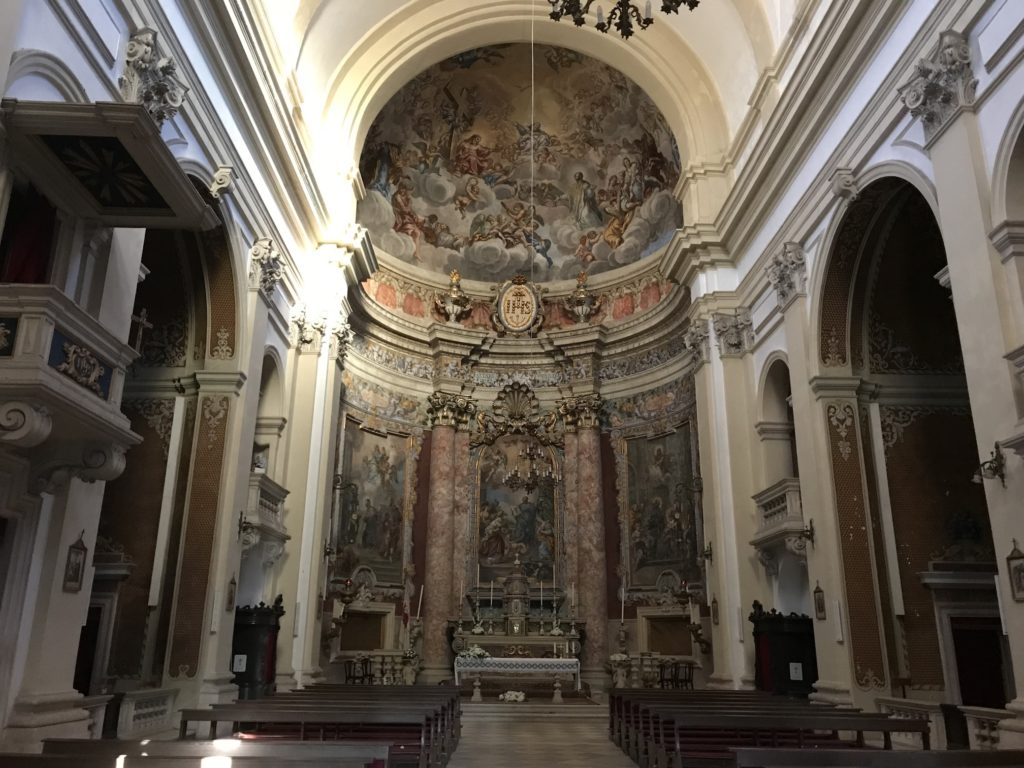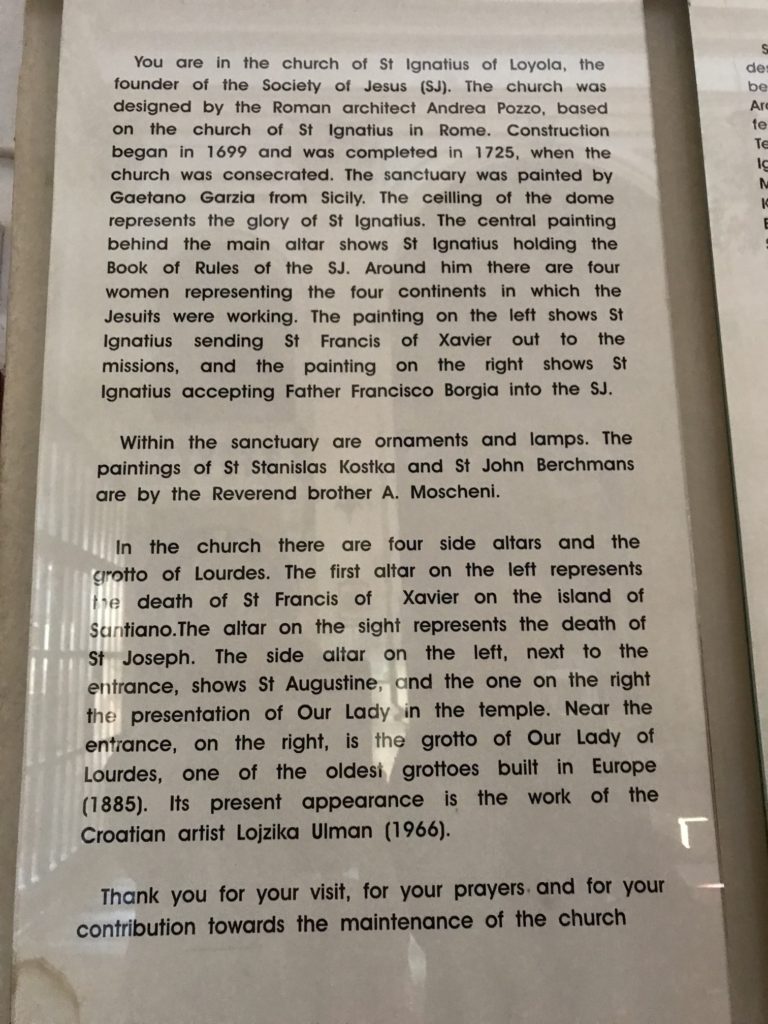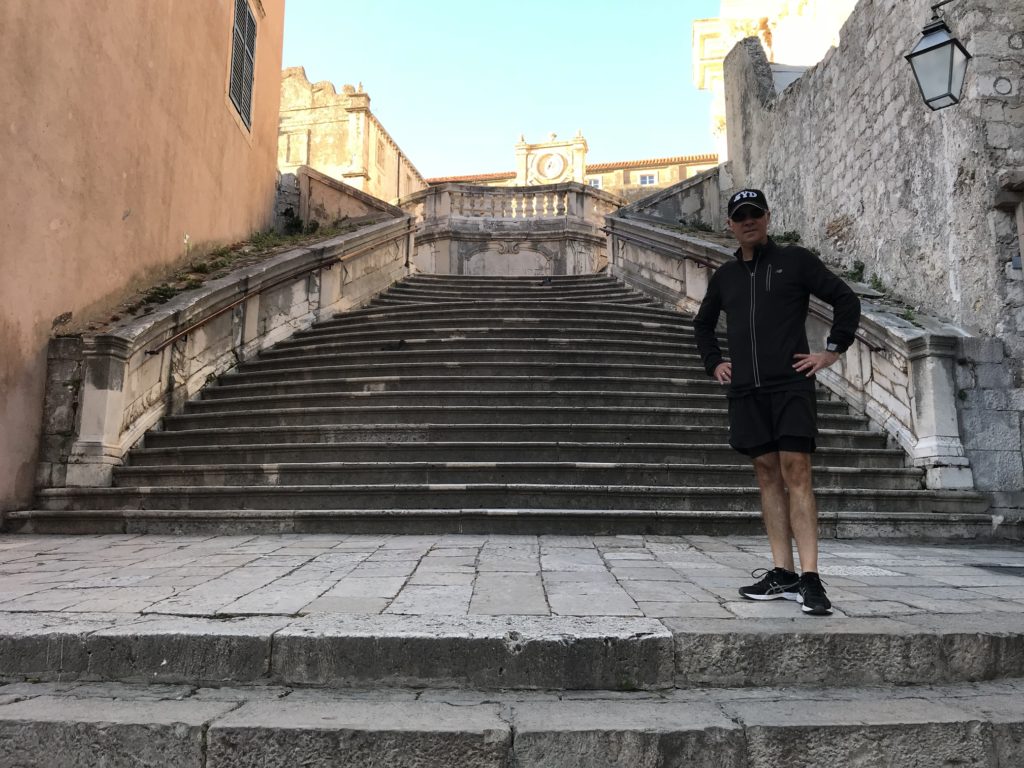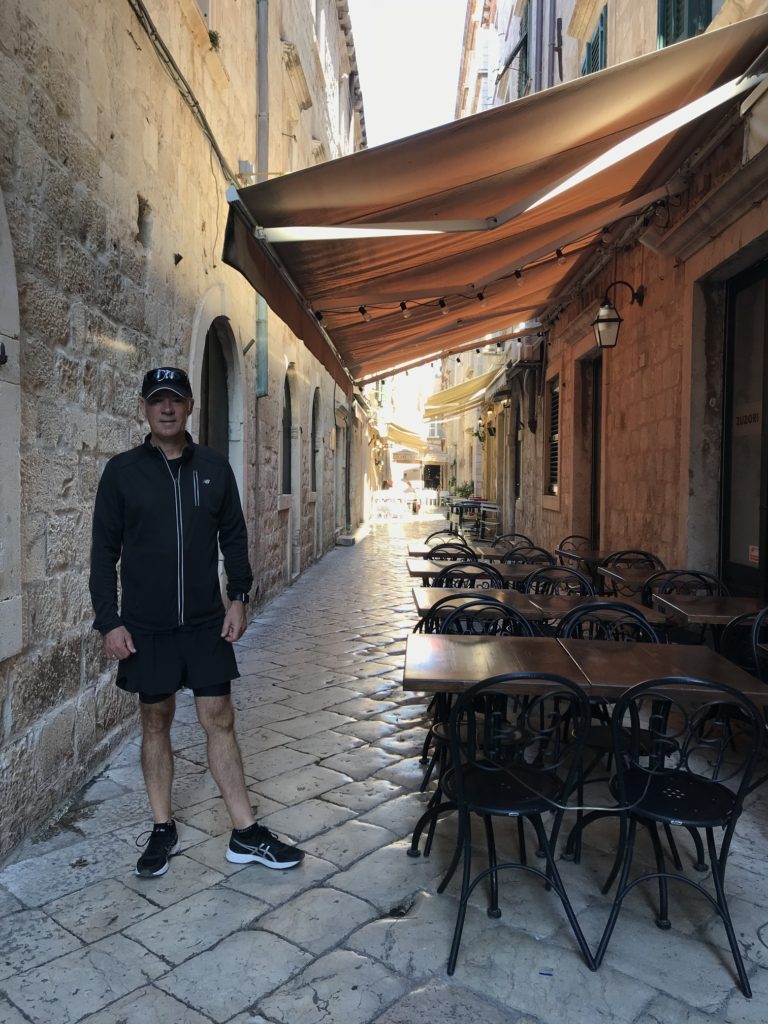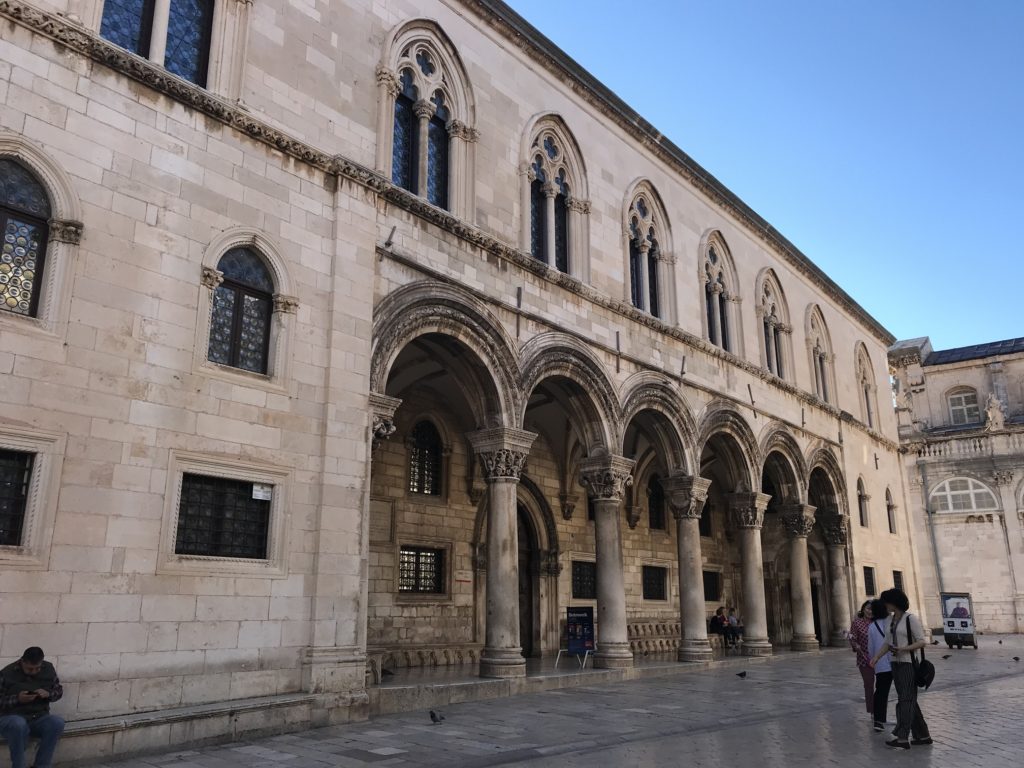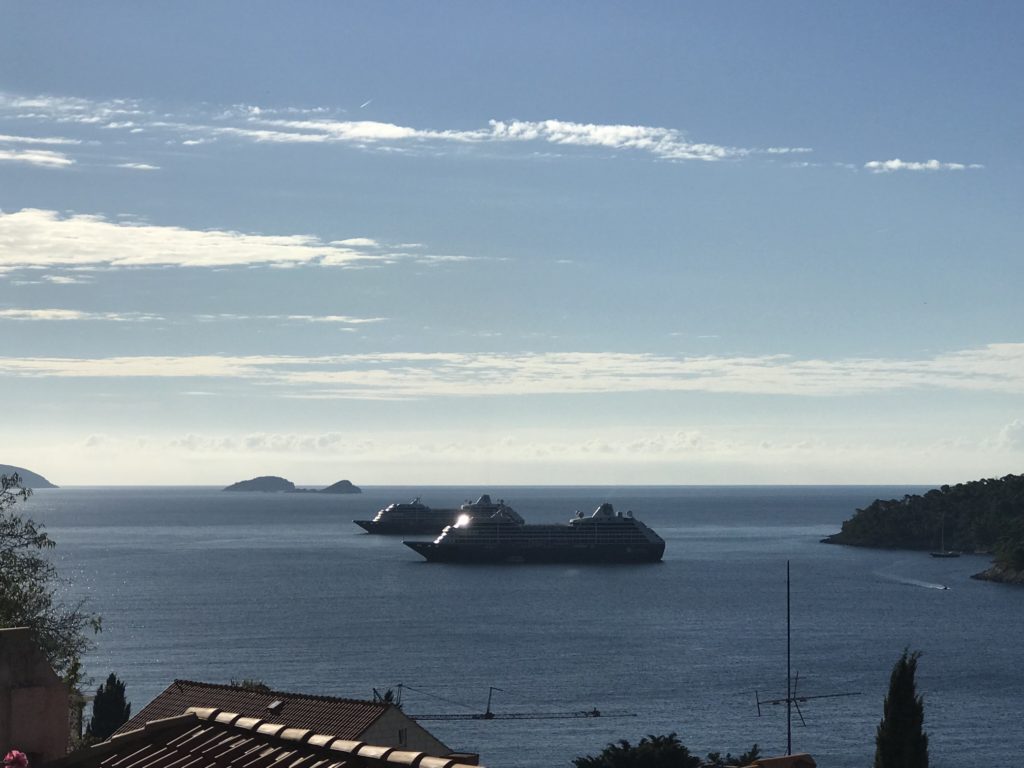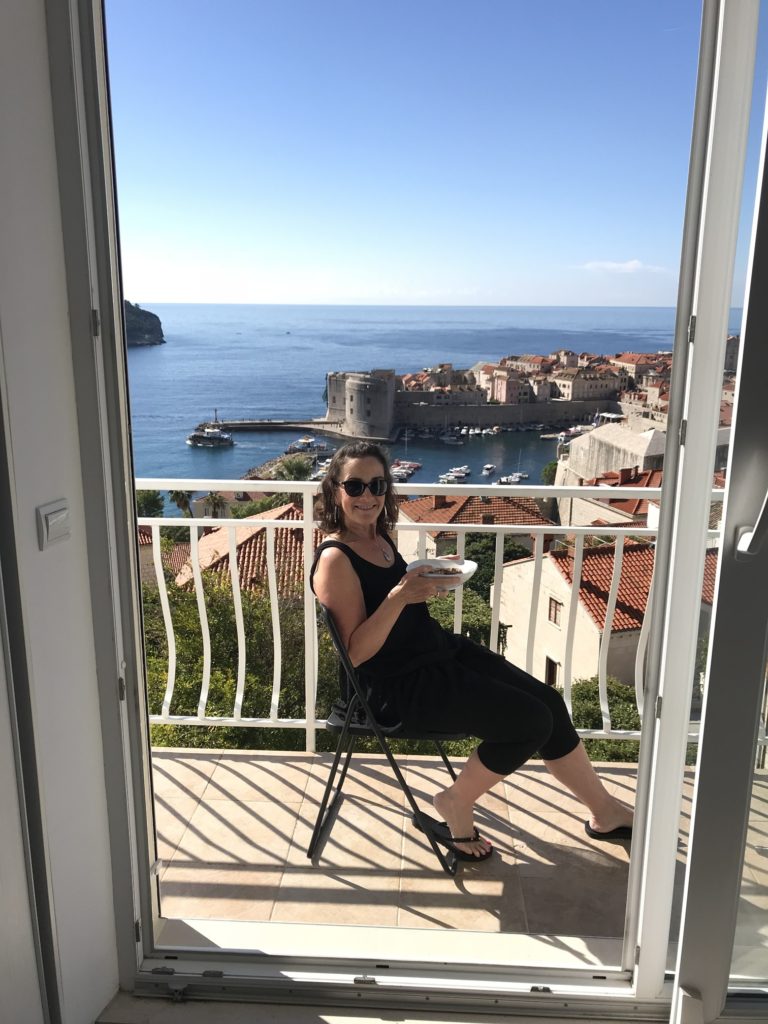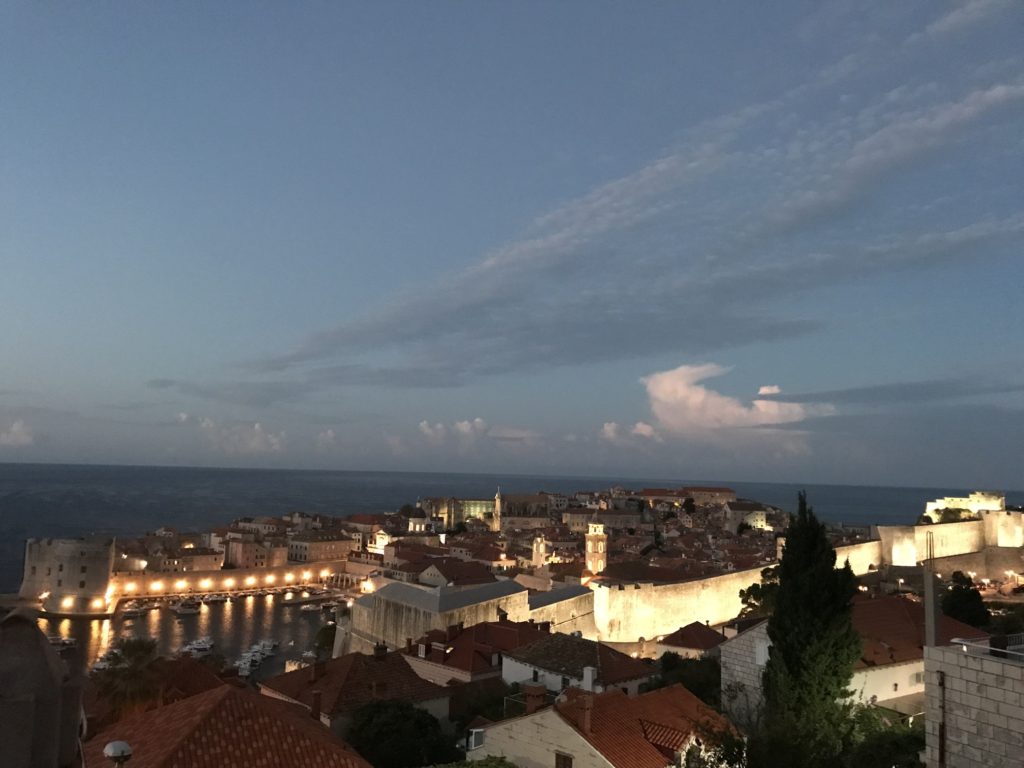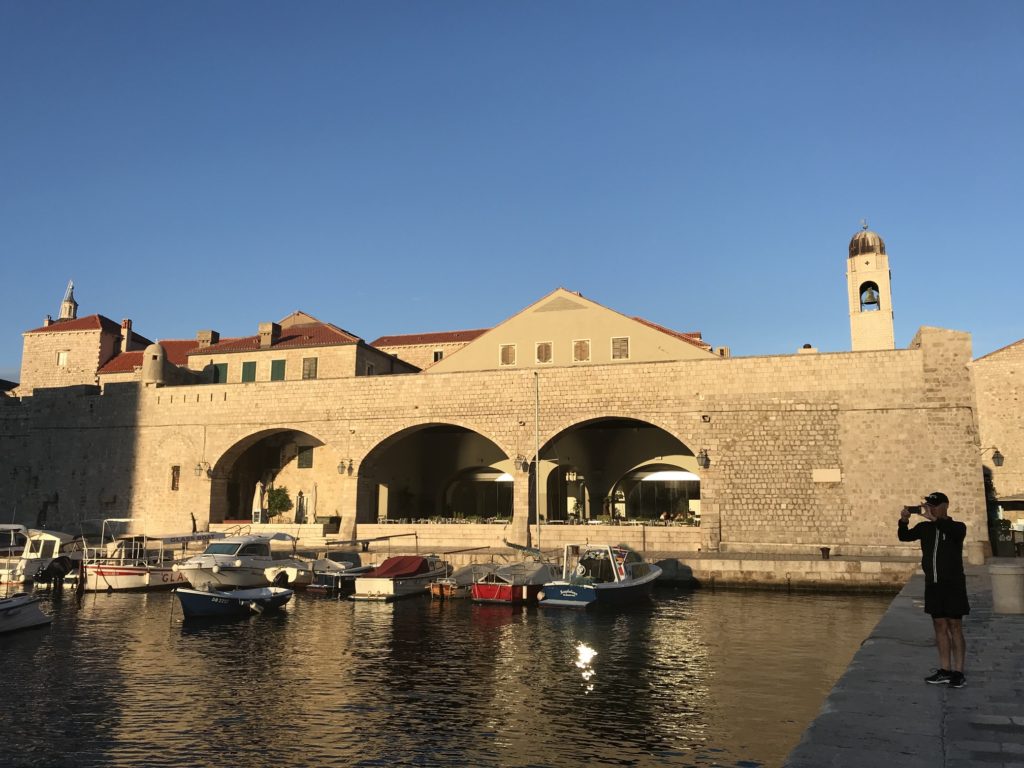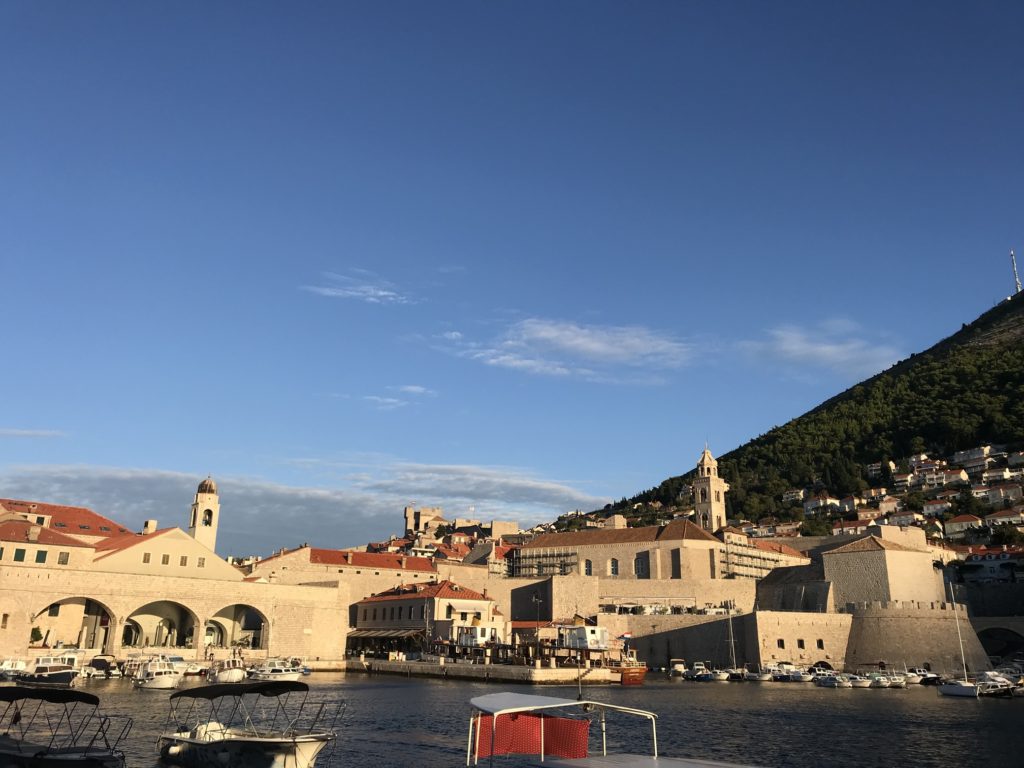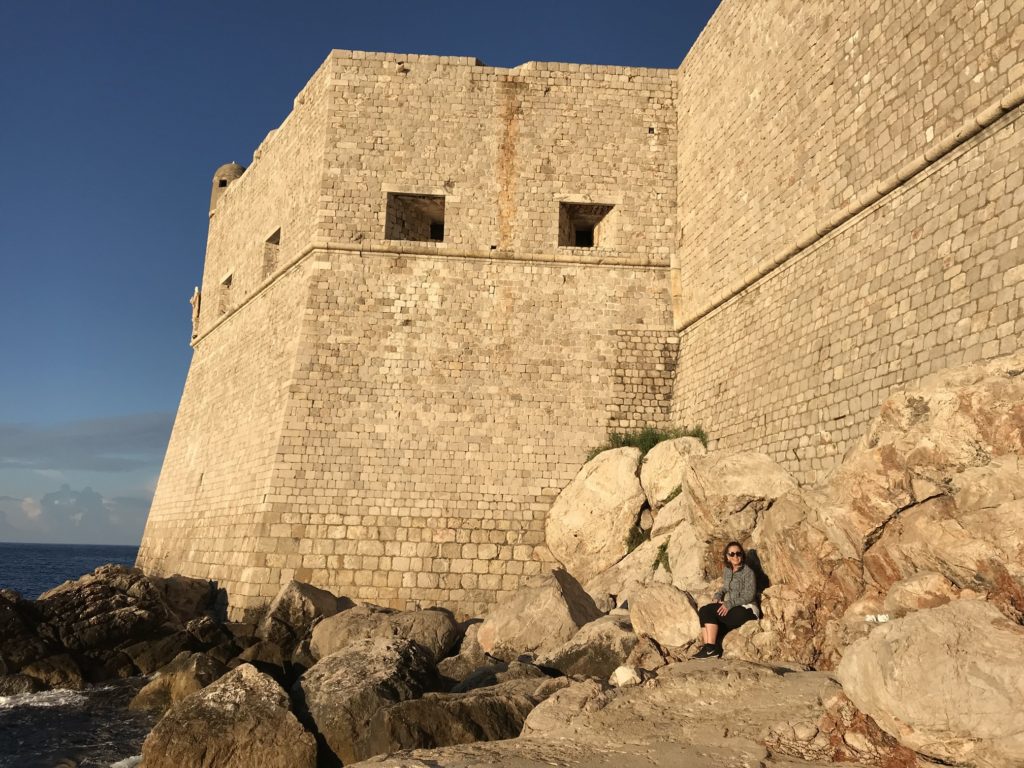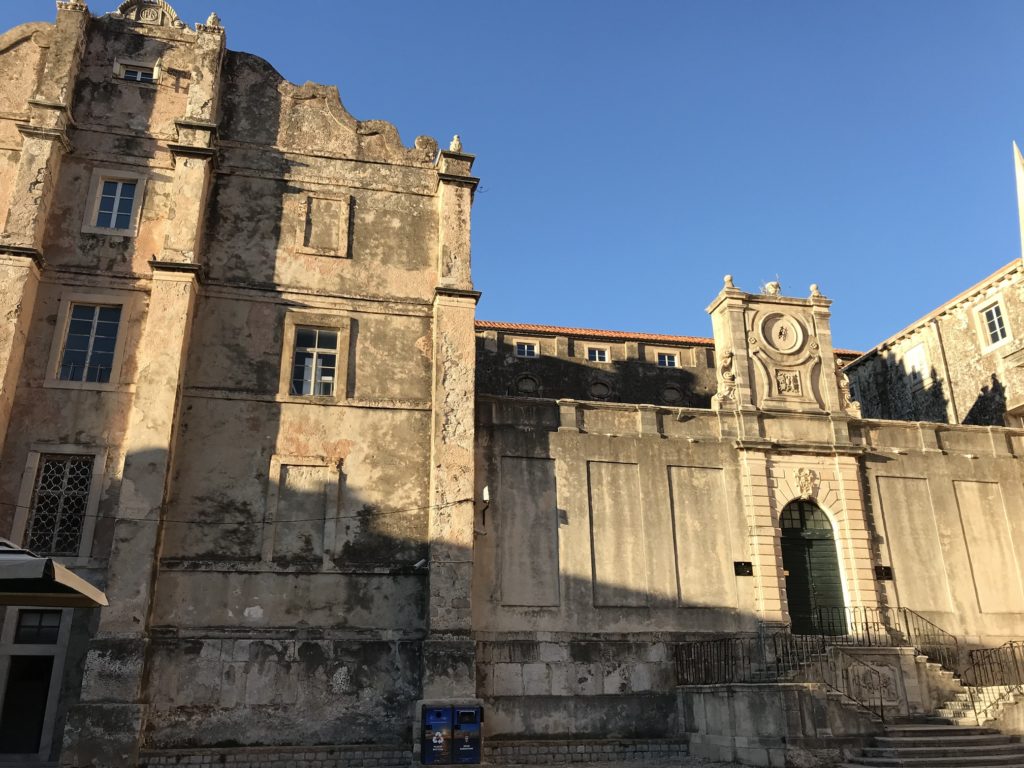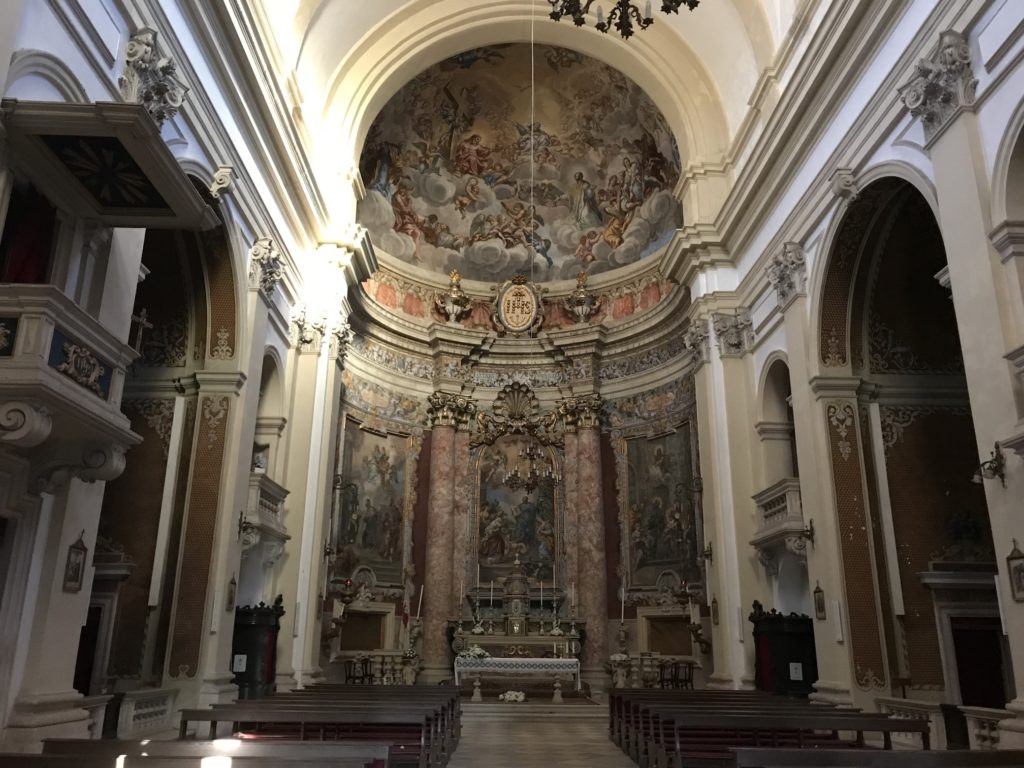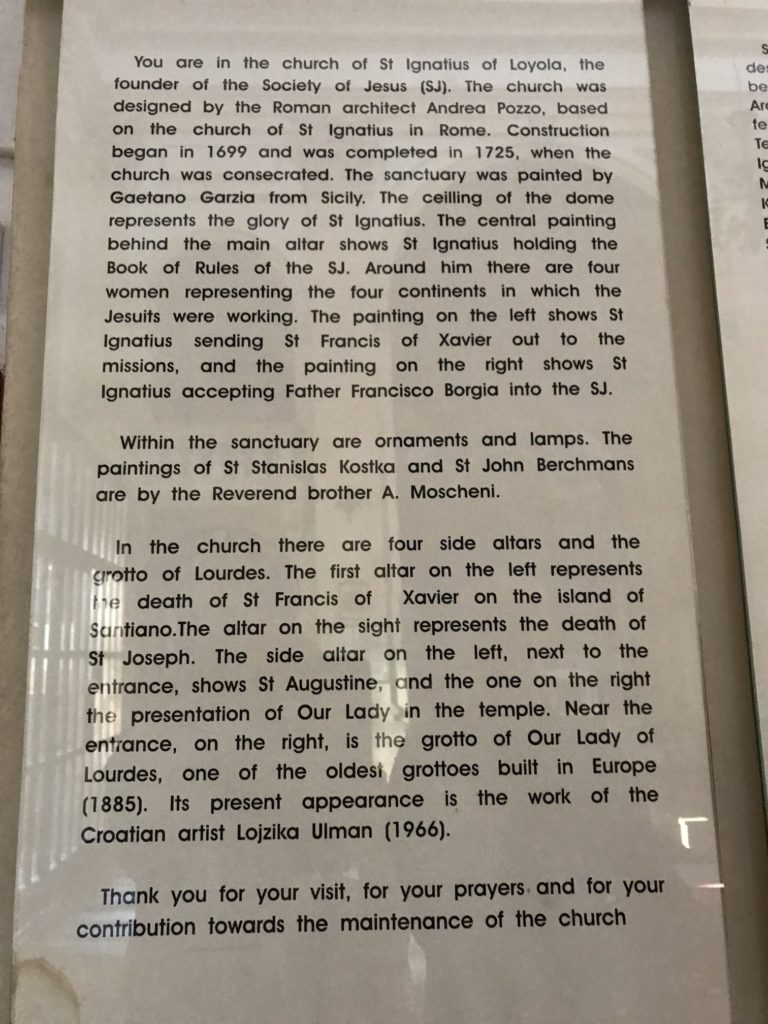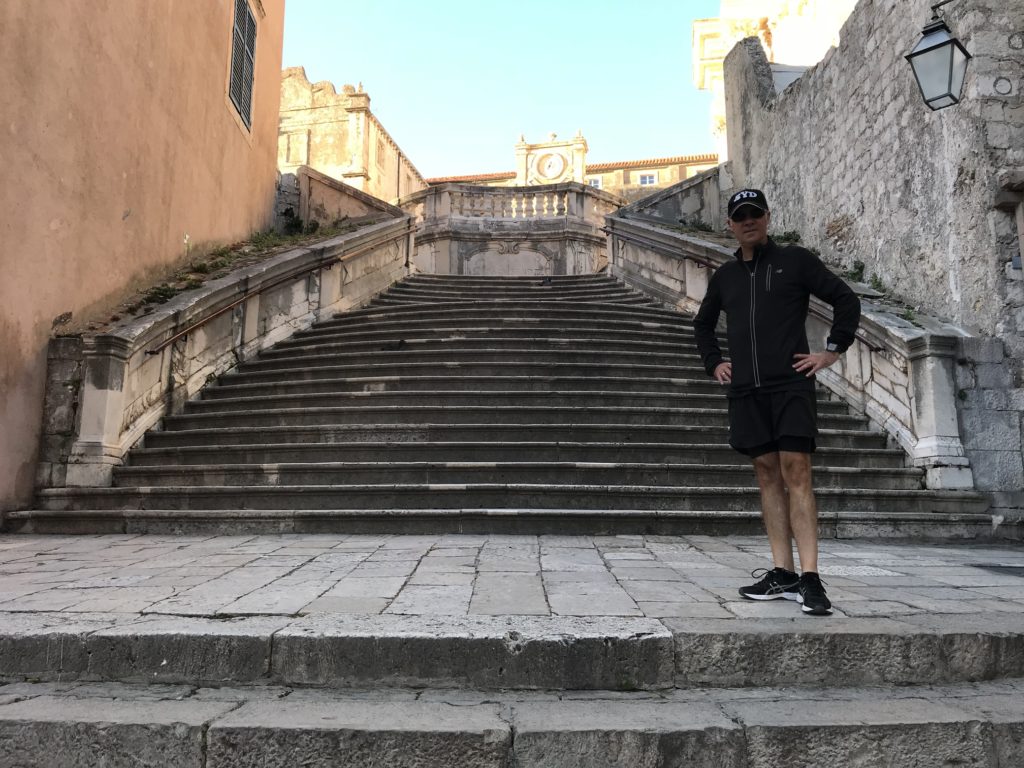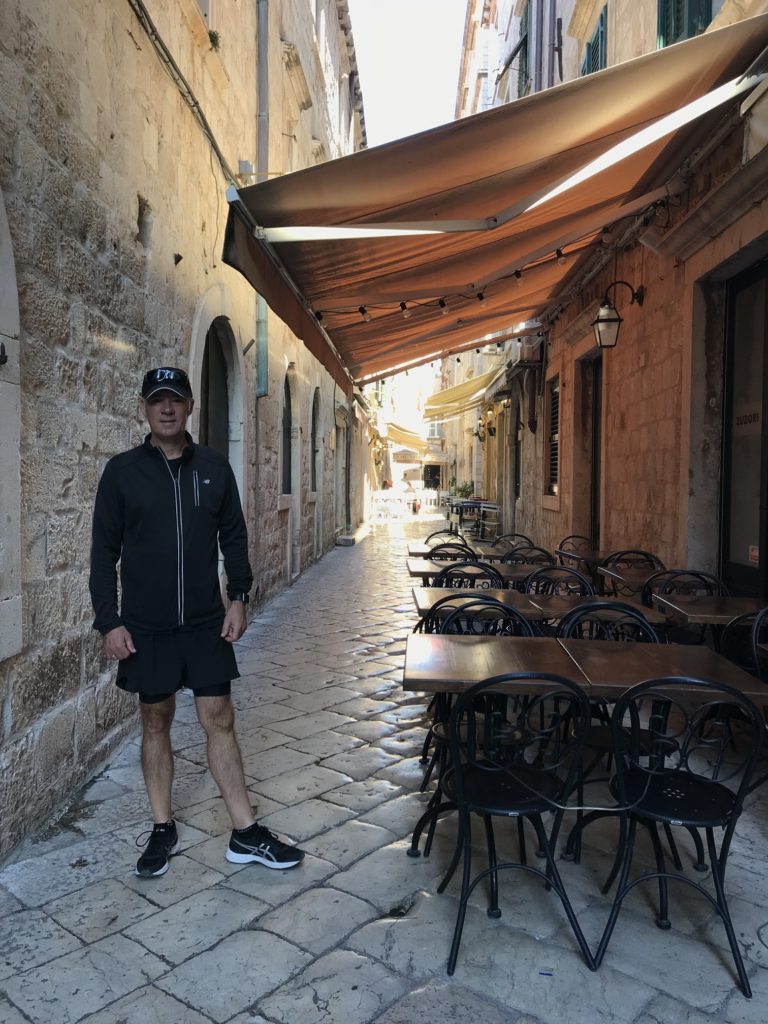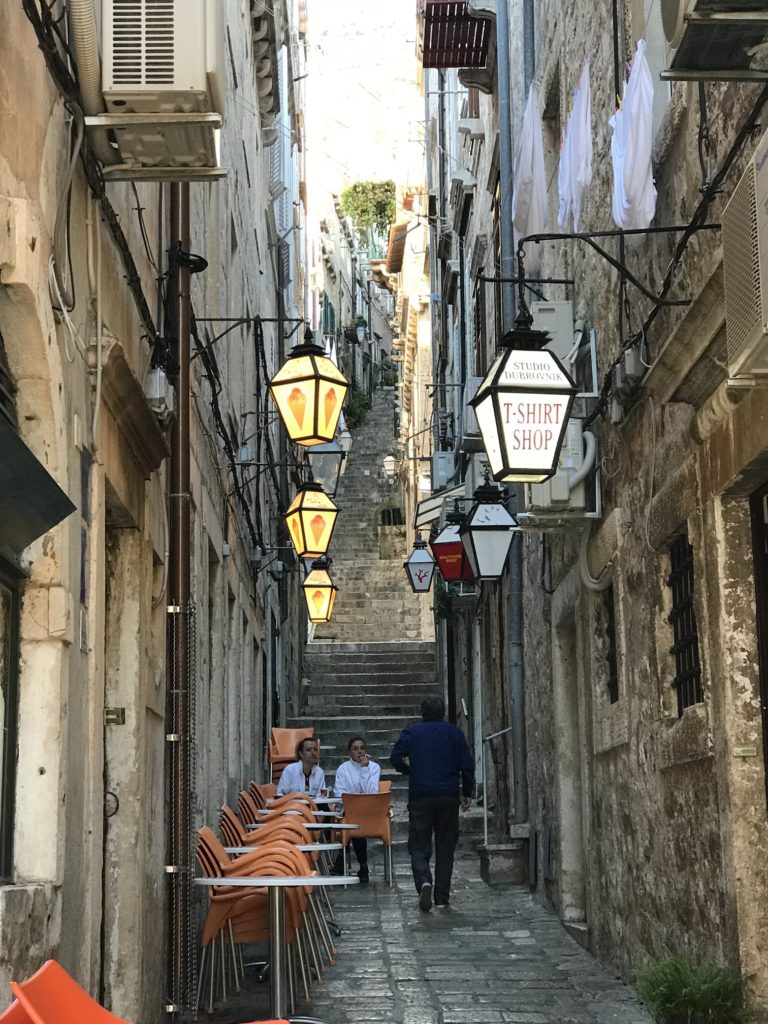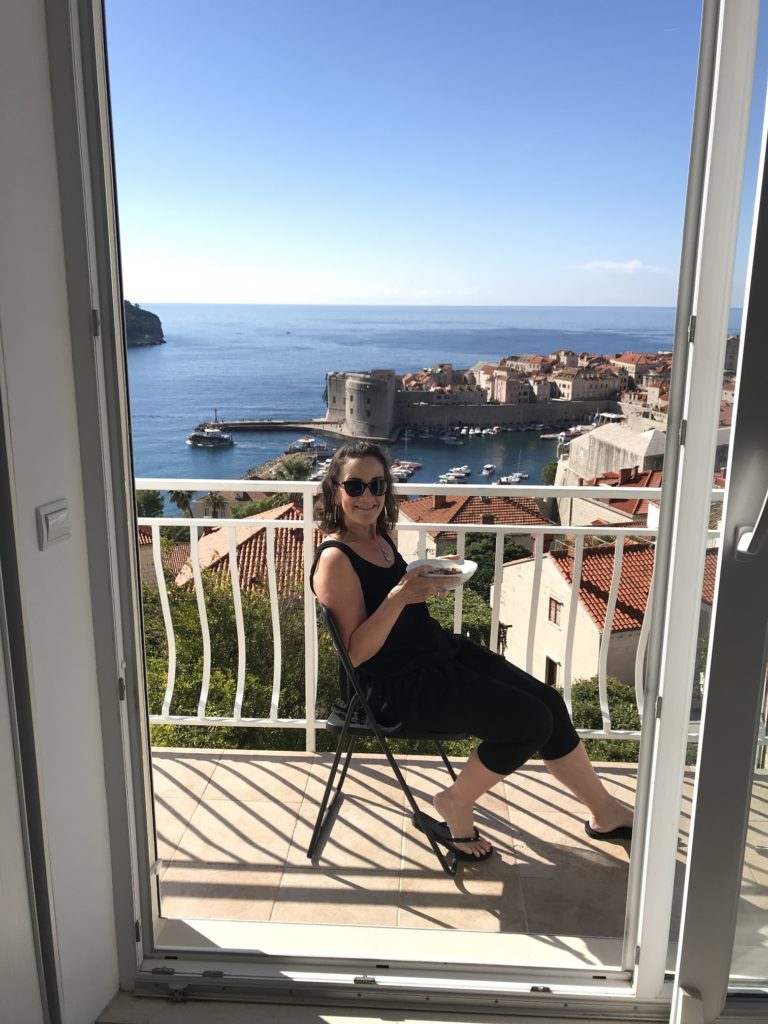Monday 9th October.
There had been some rain last night but, thankfully, the weather cleared and we woke to blue sky, sunshine and a lovely cool breeze.
We quickly hightailed it down to the Old Town to have a walk through the medieval city before the crowds set in. The place was packed yesterday afternoon and, given we’re now in the off season, we shuddered to think what peak Summer would be like. Our guide from yesterday had mentioned that Dubrovnik is suffering in much the same way that we had heard Split is. In that locals are moving out due to the high cost of living so that the place is packed with tourist all summer and then deserted over the Winter. However, the Mayor of Dubrovnik has recently experimented with holding Christmas markets to keep the city alive over the Winter. For now though, Dubrovnik does seem more like a tourist attraction and less like a living city so hopefully the Mayor and Council can address and correct this situation. I’m scribbling this down as we’ve just had our most expensive morning coffee of this whole trip and it was served without the usual accompanying glass of water. Note, also, that later in the day Mark found the public toilets to be the most expensive in Croatia as well as cash bank withdrawals!
Our plan for the day was to wait until after the cruise ships had unloaded their passengers and to then stroll the Old Town using a self-guided tour, using an app called GPSmyCity, and to then do a 3.30 pm walking tour of the City Walls.
Our walk with the App worked out ok as we had the advantage that we could skip or dwell further at each location as we liked. It wasn’t too late my before we stopped for a drink though at a lovely terrace cafe, Dubravka, just outside the Pile, or western, gate to to the city.
Re-hydrated, we then walked back to the other end of town via the Main Street, to the port area, to explore options for a cruise out to some of the islands. I was keen to locate a reputable operator that would not put out an overloaded boat, something I had noted as a warning on some reviews. After that, we then shared a sandwich for lunch at Cafe Bar Poco Loco, located in one of the many small squares. Whilst we’re finding the prices here higher than most other places we’ve been we’re bring less problems with smoking; probably because mist of the people in the Old Town are non-European tourists though.
Our walking tour of the Walls was really worthwhile and we had a great guide; this is a ‘must do’ activity when in Dubrovnik. Some of the bits of information picked up on the way included:
- Hosing cost inside the Wall: 6-10,000 Euros per sq foot.
- Jesuits started the first University but this is now a school with just 100 students where focus is on Greek and Latin.
- The 15-16th Century was the Golden Age for Dubrovnik due to their trade in salt. Salt was exchange with the Ottomans for their gold silver. These metals were then sold on to the rest of the Empire.
- Dubrovnik in 7th Century was an important port.
- Quarantine 40 day process started by Weimar Republic in 1372.
- The Eastern gate, closest to the Ottomans, is the thickest at roughly 6 m.
- 60% of the city was damaged in the Homeland War (1191-1995). Clue is seen by colour of tiles on roof: Yellow tiles= old tiles. Red are new.
- Today Dubrovnik was celebrating Independence.
- Montenegro apologized to Croatia. Serbia has not though.
- Relations between Serbia and Croatia are ok but relatively cool.
The walking tour completed at around 5 pm and we had one drink on the Wall before heading home for dinner. We have an early start tomorrow for our day trip to Mostar, in Bosnia.
